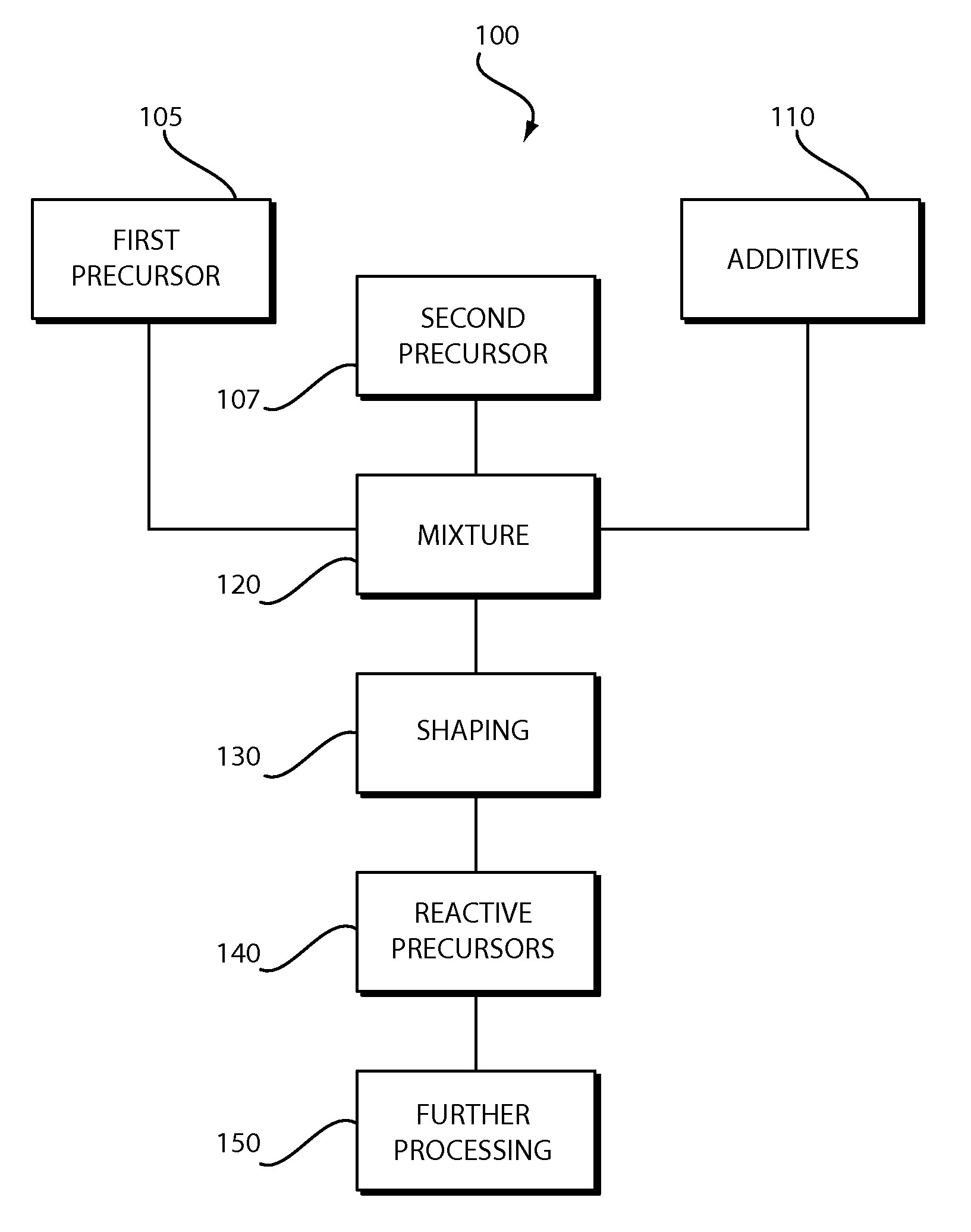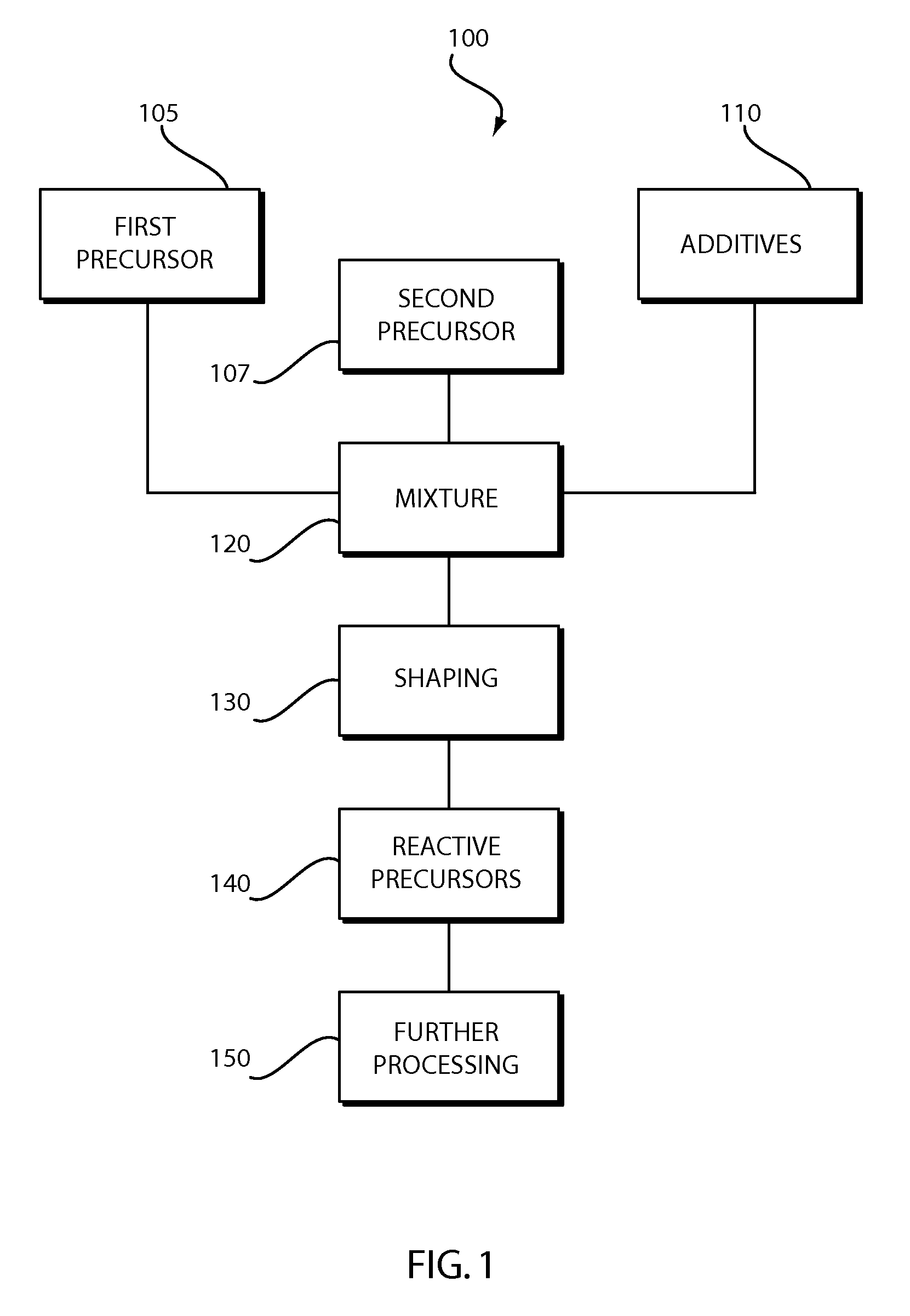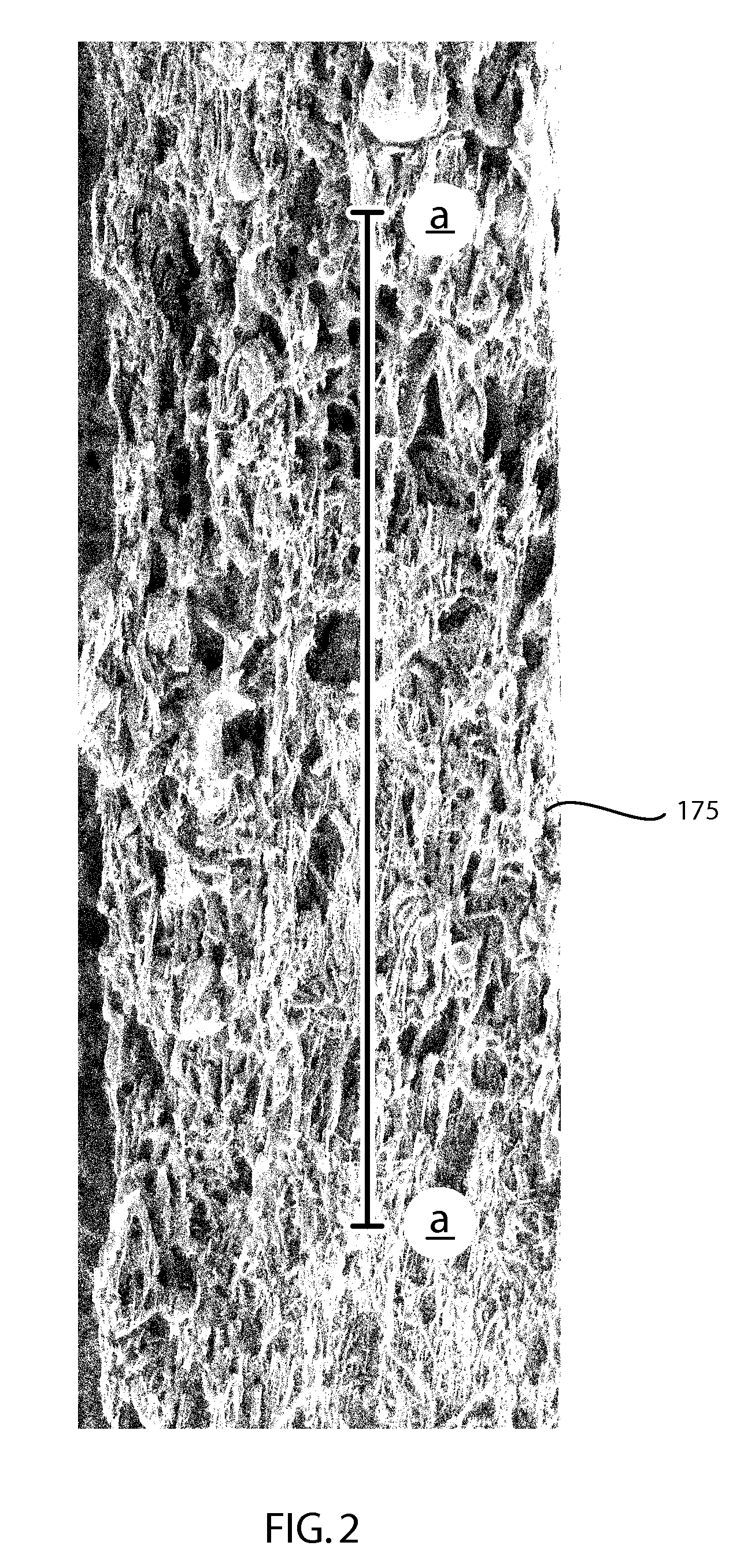Low coefficient of thermal expansion materials including nonstoichiometric cordierite fibers and methods of manufacture
a technology of thermal expansion and cordierite fibers, applied in the field of fibrous ceramic materials with low coefficient of thermal expansion, can solve the problems of ceramic filters, inefficient and ineffective for today's applications, ceramic materials are not immune to thermal stresses, etc., and achieves the effects of minimal cracking, minimal expansion, and minimal cracking
- Summary
- Abstract
- Description
- Claims
- Application Information
AI Technical Summary
Benefits of technology
Problems solved by technology
Method used
Image
Examples
examples
[0045]The following examples are provided to further illustrate and to facilitate the understanding of the disclosure. These specific examples are intended to be illustrative of the disclosure and are not intended to be limiting.
[0046]In a first illustrative example in which the target fiber chemistry is CaxMg2Al4+xSi5−xO18 (where x=0.1) with an orthorhombic crystal structure, the following precursors are mixed together: 71.2 grams of mullite fibers, 21.9 grams of Isofrax fibers, 5.3 grams of MgCO3 particles, and 1.5 grams of CaCO3. The following additives are also added to form an extrudable mixture: 16 grams of hydroxypropyl methylcellulose (an organic binder and rheology modifier), 65 grams of carbon particles (−45 micron mesh grade and utilized as a pore former), and 130 grams of deionized water as a mixing fluid. The materials are mixed into the extrudable mixture and formed into 1″ diameter honeycomb substrates by extrusion. The substrates are dried using a radio-frequency (RF...
PUM
| Property | Measurement | Unit |
|---|---|---|
| porosity | aaaaa | aaaaa |
| porosity | aaaaa | aaaaa |
| porosity | aaaaa | aaaaa |
Abstract
Description
Claims
Application Information
 Login to View More
Login to View More - R&D
- Intellectual Property
- Life Sciences
- Materials
- Tech Scout
- Unparalleled Data Quality
- Higher Quality Content
- 60% Fewer Hallucinations
Browse by: Latest US Patents, China's latest patents, Technical Efficacy Thesaurus, Application Domain, Technology Topic, Popular Technical Reports.
© 2025 PatSnap. All rights reserved.Legal|Privacy policy|Modern Slavery Act Transparency Statement|Sitemap|About US| Contact US: help@patsnap.com



